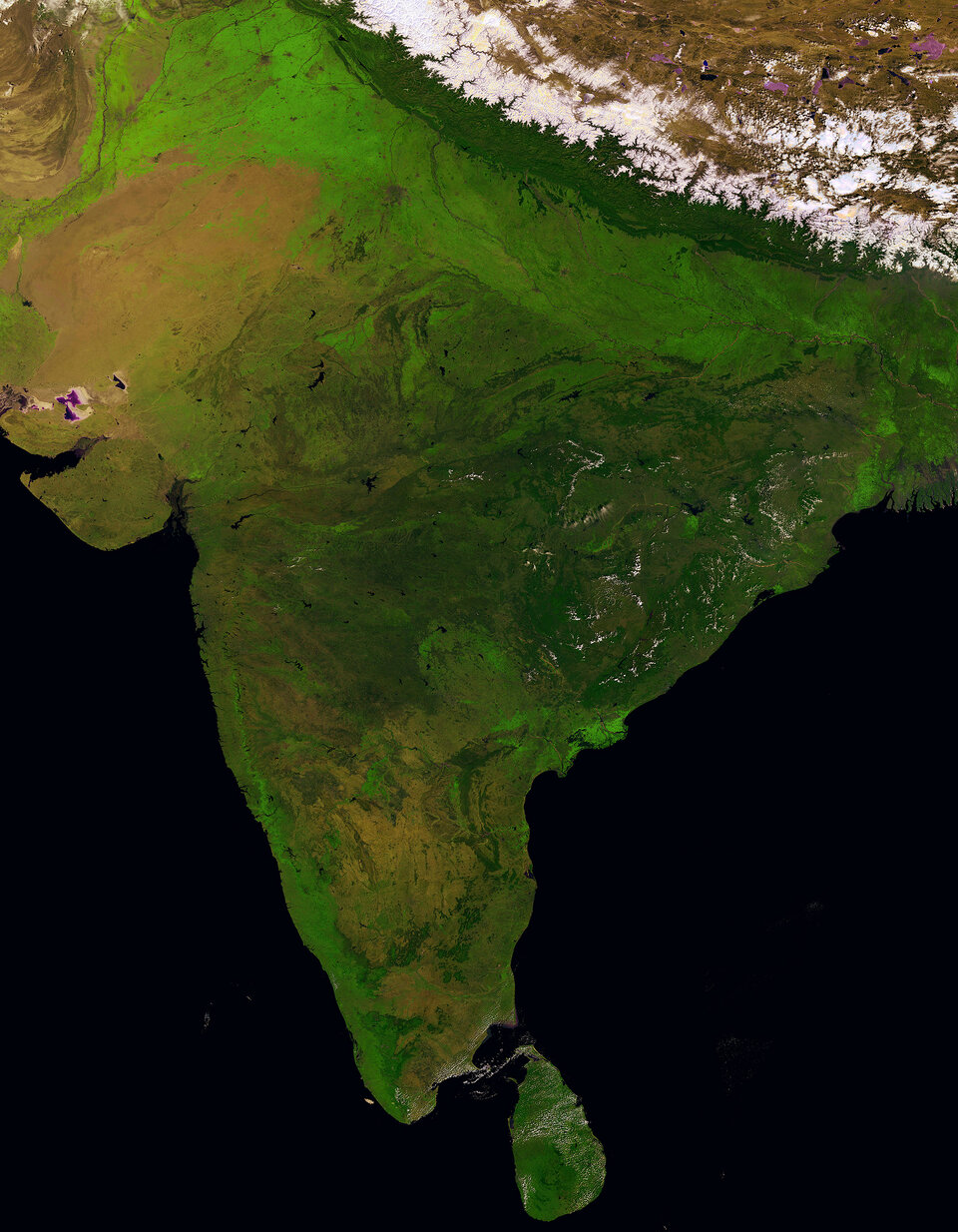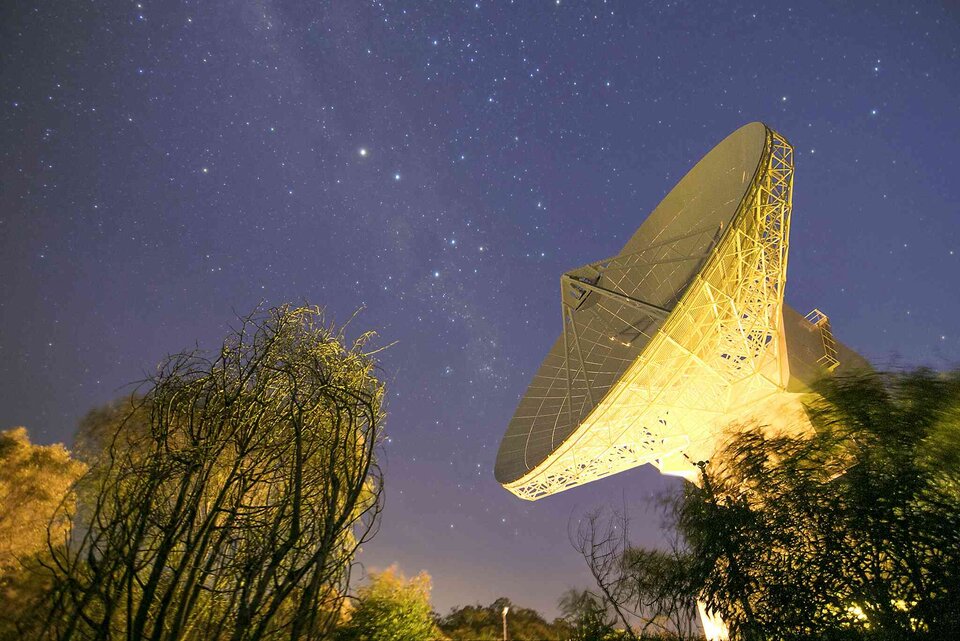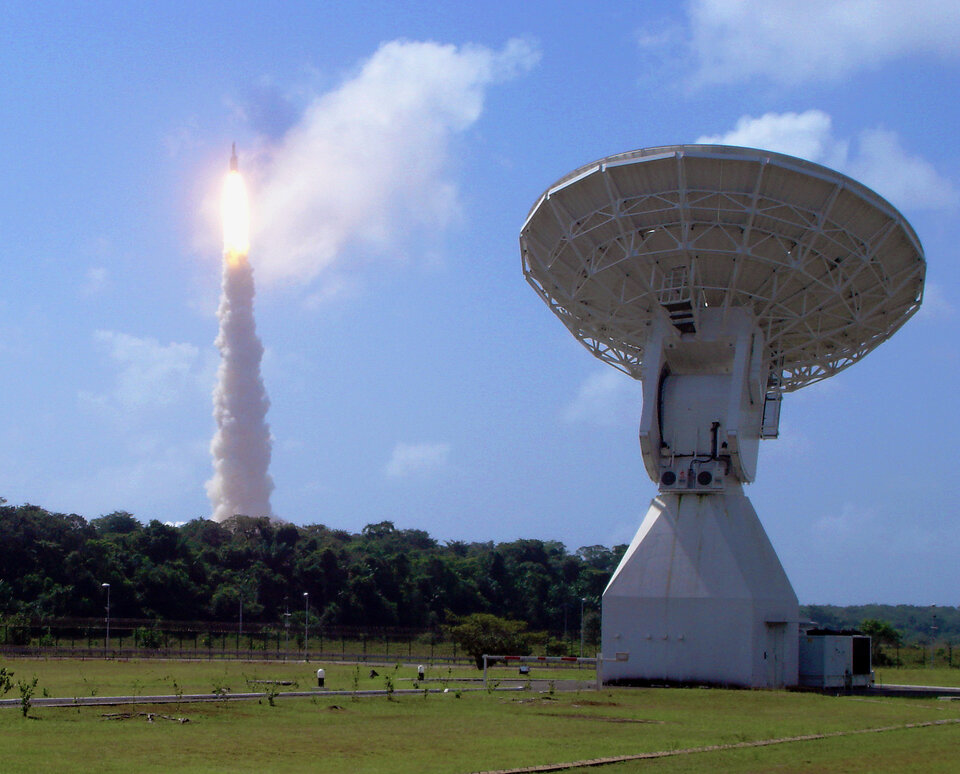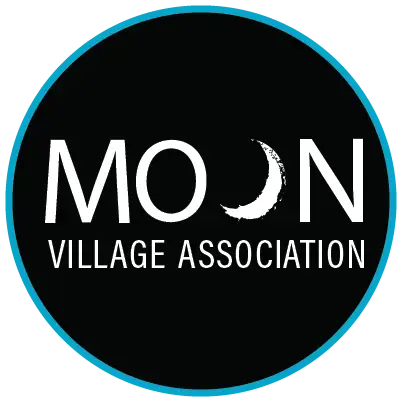31.03.2022
ISRO's Chandrayaan-3, Aditya L-1 Solar Mission To Avail ESA's Support Under Special Deal
ISRO, which is preparing for three major missions in 2022, will receive ground support from the European Space Agency under a deal signed in June 2021.

In a key development, the Indian Space Research Organisation (ISRO), which is preparing for three major missions in 2022, will receive ground support from the European Space Agency (ESA). The assistance will be provided under a special agreement that was signed in June 2021 between ESA Director General Josef Aschbacher and ISRO's former Chairman K Sivan. The European agency announced that it would use its global deep-space communication antennas for ISRO to track Indian spacecraft, pinpointing their locations at crucial stages, transmitting commands and receiving valuable data.
The agency stated that its 35-metre deep-space Estrack antennas, ranging from Australia to Argentina would guide ISRO at every step. The 15-metre antenna at Europe’s spaceport in French Guiana's Kourou and the commercial 32-metre deep-space antenna at Goonhilly station in the UK would also be used for additional support.
ISRO's gears up for Chandrayaan-3 and Aditya L-1
While ISRO's pipeline is filled with three biggest missions this year- Gaganyaan, Chandrayaan-3 and Aditya L-1 solar mission, the last two are what would test ESA's commitment first. The Chandrayaan-3, which is targeted for launch in August this year, would mark India's first-ever successful landing on another celestial body. Under this mission, ISRO would launch a lander and a rover, to scan the Moon's south pole for two weeks.
Ramesh Chellathurai, ESA Service Manager and Liaison Officer for ISRO, said as per the European agency, "Deep space communication is an essential part of any space mission. Ground stations keep spacecraft safely connected to Earth as they venture into the unknowns and risks of space. Without ground station support, it’s impossible to get any data from a spacecraft, to know how it’s doing, to know if it is safe or even to know where it is".
Another mission to be benefitted from the agreement would be the Aditya-L1 mission, wherein ISRO will launch a spacecraft to the first Lagrange point- about 15 lakh kilometres from Earth. The spacecraft is being launched deep into space in order to study a number of solar properties, such as the dynamics and origins of coronal mass ejections. Explaining the importance of a global network of antennae for this mission, Chellathurai explained, "The (Aditya) spacecraft will always be in the same direction from Earth as the Sun. So, as Earth rotates, no single ground station will always be in view of Aditya-L1. Using a global station network like ESA’s is the best way to exchange data and commands with this spacecraft as often as possible".
Quelle: REPUBLICWORLD
+++
ESA supports Indian lunar and solar missions
![]()
In brief
The Indian Space Research Organisation (ISRO) is launching two pioneering scientific spacecraft this year, one to study the Sun, and one to land on the Moon – the nation’s first soft landing on another celestial body.
ESA’s global deep-space communication antennas will provide essential support to both missions every step of the way, tracking the spacecraft, pinpointing their locations at crucial stages, transmitting commands and receiving ‘telemetry’ and valuable science data.
In-depth

In June 2021, ESA and the Indian Space Research Organisation (ISRO) signed an agreement to provide technical support to each other, including tracking and communication services to upcoming Indian space missions via ESA’s ground stations.
The first missions to benefit from this new support agreement will enable India look to the Sun and the Moon with the Aditya-L1 solar observatory and Chandrayaan-3 lunar lander and rover, both due to launch in 2022 from the Satish Dhawan Space Centre in Sriharikota Range (SDSC SHAR), India.
“Deep space communication is an essential part of any space mission,” says Ramesh Chellathurai, ESA Service Manager and ESA Liaison Officer for ISRO. “Ground stations keep spacecraft safely connected to Earth as they venture into the unknowns and risks of space. Without ground station support, it’s impossible to get any data from a spacecraft, to know how it’s doing, to know if it is safe or even to know where it is.”
A place in the Sun
The Aditya-L1 solar observatory is named for the Hindu Sun god, Aditya, and the spacecraft’s future home, L1 – the first Lagrange point of the Earth-Sun system. It will study a number of properties of the Sun, such as the dynamics and origins of coronal mass ejections.
Its home at L1 will allow Aditya to orbit the Sun at an almost constant distance from Earth, but without the planet ever eclipsing its view of our star.
“The spacecraft will always be in the same direction from Earth as the Sun,” says Ramesh. “So, as Earth rotates, no single ground station will always be in view of Aditya-L1. Using a global station network like ESA’s is the best way to exchange data and commands with this spacecraft as often as possible.”
ESA is one of the only agencies in the world with a network of deep space ground stations located across the planet. The Estrack network lets it track and communicate with spacecraft anytime and in any direction, up to two billion kilometres from Earth.

The ‘big iron’ 35-metre deep space Estrack antennas, located in New Norcia, Australia, Malargüe, Argentina, and Cebreros, Spain, will all support Aditya-L1. Additional support will be provided by ESA’s 15-metre antenna at Europe’s spaceport in Kourou, French Guiana, and the commercial 32-metre deep space antenna at Goonhilly station in the UK.
The combined ESA and Goonhilly antennas will provide tracking, telemetry and command (TT&C) support for Aditya-L1, with ISRO’s deep space antennas in India providing additional communication time.
Data and telemetry sent back by Aditya-L1 arriving via any of the ground stations will be forwarded to ESA’s ESOC mission control centre in Darmstadt, Germany. From there, they will be sent to ISRO’s ISTRAC facility for analysis.
ESA’s involvement in the mission has already begun. ISRO’s flight dynamics team tested the software they will use to precisely determine the location and orbit of Aditya-L1 on ESA’s Gaia observatory. ESA’s flight dynamics experts then used their decades of experience flying spacecraft across the Solar System to validate this software by comparing ISRO’s results to their own measurements.
Meanwhile, radio frequency compatibility tests important to ensure the hardware used by both agencies can work together took place in December 2021.
Guide me to the Moon

The support to Aditya-L1 was soon extended to ISRO’s upcoming Chandrayaan-3 – “Moon craft” – mission to study the lunar surface at the Moon’s south pole.
The mission comprises a lander and rover, which will spend two weeks conducting scientific and technical operations on the surface. Chandrayaan-3 would be India’s first successful soft landing on another celestial body – a major milestone for any space programme.
ESA’s Kourou antenna and the Goonhilly station will be added to the NASA deep space stations supporting the mission and provide similar support to Chandrayaan-3 as they will to Aditya-L1.
The ESA station support for both Aditya L1 and Chandrayaan-3 begins with the critical launch and early orbit phase and continues to the end of both missions, if required by ISRO.
India and space
ISRO was formed in 1969 and is headquartered in the city of Bengaluru. It operates a launch site and a deep space ground station located within India.
The Organisation was among ESA’s first international partners in the 1970’s, with initial cooperation culminating in the provision of ESA instruments for ISRO’s Chandrayaan-1 lunar orbiter mission, launched in 2008.
Follow @esaoperations on Twitter for updates on ESA’s support to Aditya-L1 and Chandrayaan-3.
Quelle: ESA
----
Update: 27.04.2022
.
Isro gives first glimpse of Chandrayaan-3 lunarcraft; mission launch due in August



Quelle: The Times of India
----
Update: 24.10.2022
.
Chandrayaan-3 pushed to 2023, launch to Moon likely in June
The initial plan was to launch the Chandrayaan-3 mission in the third quarter of 2022. However, the mission has been further delayed.

- The Chandrayaan-3 mission was to launch in August this year
- The work on Chandrayaa-2's successor was earlier affected due to Covid
- Chandrayaan-2 mission crash-landed on the far side of the Moon
By India Today Web Desk: The Indian Space Research Organisation (Isro) is set to launch its third mission to the Moon in June of next year. S Somnath, Chairman of the Indian space agency said that Chandrayaan-3 will liftoff in 2023 with a more robust lunar rover onboard which is crucial for future inter-planetary explorations.
"Chandrayaan-3 (C-3) launch will be in June next year onboard the Geosynchronous Launch Vehicle Mark-III (GSLV Mk-III)," S Somnath said, adding that the space agency is also working on the Gaganyaan mission and the first abort test is also scheduled in the new year.
The space agency chief said that while the mission will rely on the Chandrayaan-2 orbiter, which is already working around the Moon, the Chandrayaan-3 rover is not a replica of its predecessor. "C-3 is ready now. It is not a replica of the C-2. The rover is there. The engineering is significantly different. We have made it more robust so that it does not have problems like last time," Somnath said.
Quelle: INDIA TODAY
----
Update: 21.02.2023
.
Chandrayaan-3 undergoes EMI/EMC test successfully


Chandrayaan-3 lander successfully underwent EMI/EMC test during Jan 31, 2023 - Feb 02, 2023, at U R Rao Satellite Centre, Bengaluru.
EMI-EMC (Electro - Magnetic Interference/ Electro - Magnetic Compatibility) test is conducted for satellite missions to ensure the functionality of the satellite subsystems in the space environment and their compatibility with the expected electromagnetic levels. This test is a major milestone in the realization of the satellites.
Chandrayaan-3 interplanetary mission has three major modules:the Propulsion module, Lander module, and Rover. The mission's complexity calls for establishing radio-frequency (RF) communication links between the modules.
During the Chandrayaan-3 lander EMI/EC test, Launcher compatibility, Antenna Polarization of all RF systems, Standalone auto compatibility tests for orbital and powered descent mission phases, and Lander & Rover compatibility tests for post landing mission phase were ensured. The performance of the systems was satisfactory.

Chandrayaan-3 Lander inside the anechoic chamber with various configurations for different tests
Quelle: ISRO
----
Update: 24.03.2023
.
Isro to launch Chandrayaan-3, Aditya-L1 missions in mid-2023
Aditya-L1, India's maiden solar mission, will be launched into space in the same time period as Chandrayaan-3.

The Chandrayaan-3 mission during acoustic, vibration test. (Photo: Isro)
By India Today Science Desk: Days after the Indian Space Research Organisation (Isro) completed essential tests on the Chandrayaan-3, the mission is likely to launch in mid-2023. The Indian space agency chief S Somnath said that the launch of Chandrayaan-3, India's third lunar mission, will likely be done by the middle of 2023.
"The Chandrayaan-3 craft is fully ready. It is fully integrated. Of course, there is some correction work being done, and we are building a lot of confidence in the mission through lots of simulations and tests, etc. And possibly the launch can take place by the middle of this year," Somnath said.
Chandrayaan-3 is a follow-on mission to Chandrayaan-2 to demonstrate end-to-end capability in safe landing and roving on the lunar surface. It consists of the Lander and Rover configuration. Somanath said it would have a similar structure as that of Chandrayaan-2, with the orbiter, a lander, and a rover.
"Of course, the orbiter is devoid of all those payloads that are there in Chandrayaan-2. It will only have a little bit of payload. But the primary objective is to take the lander to the orbit of the moon and make it land. "The primary objective of Chandrayaan-3 is going to be a precise landing. For that, a lot of work is being done today, including building new instruments, building better algorithms, taking care of the failure modes," the space agency chief added.
Aditya-L1, India's maiden solar mission, will also be launched into space in the same time period.
Speaking at the 4th Indian Planetary Science Conference, Somnath said that Aditya-L1 is going to be a very unique solar observation capability for which instruments have already been delivered, and ISRO is in the process of integrating them into the satellite.
"I am also eagerly waiting for this (Aditya-L1) launch to happen, possibly by the middle of this year, and I am sure we will make this mission a great success," said Somanath. The Aditya mission will be launched to Lagrangian Point L1, a vantage point to observe the Sun continuously without disturbance over a long period of time.
"And this is going to be a very unique solar observation capability that we are building. Instruments for this have already been delivered, and we are in the process of integrating these instruments in the satellite," the ISRO chief said. He said the instruments to be used are currently undergoing testing for integration with the satellite.
Quelle: India Today
+++
Main objective of Chandrayaan-3 will be precise landing: Isro chief
The lander and rover component of the Ch-2 mission had malfunctioned in the final moments before the touchdown and crash-landed, getting destroyed in the process.
The “primary objective” of the next Indian moon mission Chandrayaan-3 (Ch-3), expected to launch later this year, “is going to be precise landing”, said Indian Space Research Organisation (Isro) chairman and secretary of Department of Space (DoS), Isro) chairman S Somanath.
Speaking at the three-day Fourth Indian Planetary Science Conference (IPSC-2023) that began Wednesday at the Physical Research Laboratory (PRL), the Isro chairman referred to Chandrayaan-2 (Ch-2), India’s second space mission to moon, whose lander rover component malfunctioned in the final moments before the touchdown and crashlanded.
“Now we are working on Ch-3, the craft is almost ready, it is fully integrated… possibly the launch can take place by the middle of this year… The primary objective of Ch-3 is going to be precise landing. For that, a lot of work is being done… The scientific objectives remain more or less the same as the earlier (mission of Ch-2)… Let us hope that this time Ch-3 will do the right job…,” he said.
The lander and rover component of the Ch-2 mission had malfunctioned in the final moments before the touchdown and crash-landed, getting destroyed in the process.
At the IPSC, organised by the Indian Planetary Science Association (IPSA), Somanath also participated in a talk on “Indian Accomplishments in Space Science and Planetary Exploration”.
While Isro’s human spaceflight mission Gaganyaan is aimed at achieving loftier goals, Somanath said, it does not have “good scientific objectives” at the moment, an area that needs to be worked upon.
“(Gaganyaan) programme is going very well now, we are working on a lot of objectives… I have not seen any good scientific objectives coming out of this whole programme, I think this is something that we need to work on. There are a lot of possibilities today… which can be done robotically or with the presence of human beings… we need to work on this and come out with some good scientific goals through the Gaganyaan programme. Sending a man up there is one part but doing something very meaningful using him, is something we are all looking for,” said Somnath.
Detailing on the successes of the past two moon missions, Somanath noted that India’s progress in capabilities has garnered interest in potential purchase by NASA’s Jet Propulsion Laboratory (JPL) — a research and development lab federally funded by NASA and managed by Caltech.
Somanath said, “Ch-1 is an example of global cooperation, hosting instruments from other nations. In Ch-2, it was all Indian instruments on board… Today when we talk about Ch-3, there is nothing of the other nations that is being hosted… when JPL team visited and reviewed Ch-3 mission, they were praising us for the type of instruments and capabilities designed and built into Ch-3… they said, ‘we are ready to buy some of them for our own missions’… Many of the instruments on board Ch-1, Ch-2 have produced excellent results… most important one being the discovery of the so-called presence of water on Moon…”
Hinting at the stagnant status of the Venus mission (Shukrayaan-1), Somanath said, “We are in the process of defining a project for Venus… we need to work on it further. Recently we conducted a science workshop on Venus and a lot of interest is there in the science community to make use of the capability in this mission and I’m very sure we will take it up further.”
Quelle: The Indian Express
----
Update: 20.04.2023
.
ISRO and MVA collaborate for the outreach of the Chandrayaan-3 Mission
The Moon Village Association and the Indian Space Research Organisation (ISRO) are happy to announce to host global outreach activities in connection with the proposed Chandrayaan-3 launch by Indian Space Research Organisation.
The common goal of these activities is to increase the impact of the ISRO lunar programme on a global scale and foster further international cooperation. The two organisations are cooperating to focus on the global aspect of lunar exploration and identify, communicate, and encourage the youth to focus on the mutual benefits that the entire world gets at every lunar mission.
The topics proposed for possible cooperation are the following:
1. Global Video Competition: A global video competition wishing the Chandrayaan-3 mission a great ride and a successful landing on the Moon by discussing the importance of the Chandrayaan-3 Mission for India and the Global Moon Exploration and Settlement.
2. Webinars to brief the global audience about the mission; the challenges and the benefits.
Statements:
Giuseppe Reibaldi, President of the Moon Village Association, stated that “This joint activity with ISRO is an important collaboration that demonstrates the relevance of MVA as a platform to multiply national lunar program outreach efforts. With MVA hoping to grow and support developing countries, established and emerging space countries, and many more, we look forward to working with ISRO on this outreach effort.”
Sudheer Kumar N, Director, Capacity Building and Public Outreach, ISRO Headquarters, stated that “The Chandrayaan-3 mission is going to be an important milestone in the Indian Space programme, which is aimed to demonstrate the critical technologies to land the spacecraft on the south pole of the moon. The mission encompasses critical technologies that should reach the global youth to encourage the scientific temperament on lunar missions.”
About the Moon Village Association
The Moon Village Association (MVA) is an international non-governmental organisation (NGO) based in Vienna, founded in 2017. Its goal is the creation of a permanent global informal forum for stakeholders like governments, industry, academia and the general public interested in the development of the Moon Village. The MVA is assembling all efforts from private industry, governments, and others aimed to explore and use the Moon sustainably. The MVA fosters cooperation for existing or planned Moon exploration programs, whether public or private.
It comprises more than 600 participants in MVA activities and 27 institutional members from more than 60 countries, representing a diverse array of technical, scientific, cultural, and interdisciplinary fields. The MVA partners with non-space organisations to promote international discussions and formulation of plans to foster the development of the Moon Village, and is creating international, national and regional networks to engage civil society around the world. The Moon Village Association’s mission is unique, bridging together both spacefaring and non-spacefaring nations offering them the opportunity to play a role in its realisation. There is no other organisation on the international scene having such a mission.
About Indian Space Research Organisation (ISRO)
Indian Space Research Organisation (ISRO) is the national space agency under the Department of Space (DOS), Government of India. The organisation is involved in R&D activities of space science, technology, and application to harvest the benefits of outer space for the Indian community. The department executes the Indian Space Programme primarily through various Centers/units within ISRO. The prime objective of ISRO/DOS is the development and application of space technology for the various needs of the nation. ISRO has developed capabilities in manufacturing satellites and launch vehicles to fulfill this objective. ISRO's Lunar and interplanetary missions encourage and promote space science research, by sharing a vast amount of valuable data with the scientific community across the globe.
Quelle: ISRO
----
Update: 8.05.2023
.




Quelle: DNA
----
Update: 23.05.2023
.
Isro's Chandrayaan-3 launch likely on July 12

Isro has started the process of assembly of payloads for Chandrayaan-3. (ISRO)
The Indian Space Research Organisation is expected to launch the third edition of its lunar mission, Chandrayaan-3, on July 12, officials of the space agency have said.
While Isro did not officially confirm the dates, a senior official, speaking on condition of anonymity, said the project is moving on track.
“The project is right on track, and the way things are moving, the launch is expected to be on July 12,” the official said.
“The lunar touchdown is likely on August 23,” the official said.
Last week, the space agency started the assembly process for the payloads for Chandrayaan-3, in a move aimed at ensuring the July launch, senior officials from the department of space said WHEN.
The payloads are being assembled at the UR Rao Satellite Centre (URSC) in Bangalore, from where it will be sent to the Sriharikota space port for launch. The mission will be launched on board the Geosynchronous Satellite Launch Vehicle (GSLV Mk-3)
“Hopefully, everything sticks according to the plan,” the official cited in the first instance said.
Chandrayaan-3 consists of an indigenous lander module, a propulsion module and a rover. The lander and the rover will have scientific payloads to carry out experiments on the lunar surface.
The mission objectives include developing and demonstrating new technologies required for interplanetary missions. The lander will have the capability to soft land at a specified lunar site and deploy the rover, which will carry out in-situ chemical analysis of the lunar surface during the course of its mobility.
The Chandrayaan programme, also known as the Indian lunar exploration programme, is an ongoing series of outer space missions by Isro.
The first moon rocket, Chandrayaan-1, was launched in 2008, and was successfully inserted into lunar orbit.
Chandrayaan-2 was successfully launched and inserted into lunar orbit in 2019, but its lander “crash-landed” on the moon’s surface when it deviated from its trajectory while attempting to land on September 6, 2019, due to a software glitch.
Quelle: Hindustan Times
----
Update: 29.05.2023
.
Chandrayaan-3 likely to be launched on July 12, will contain only Lander and Rover
The mission objective of Chandrayaan-3, as mentioned on the ISRO official website, is to have a safe and soft landing on the moon, followed by a rover to conduct the in-situ experiments on the moon.
After the failure of Chandrayaan-2 in 2019, the Indian Space Research Organisation ( ISRO) is all set to launch its follow-up mission Chandrayaan-3 to reach the dark surface of the moon. Reports are suggesting that it is expected to take off on July 12 by launch vehicle mark-II or LVM3 from Satish Dhawan Space Centre, Sriharikota.

